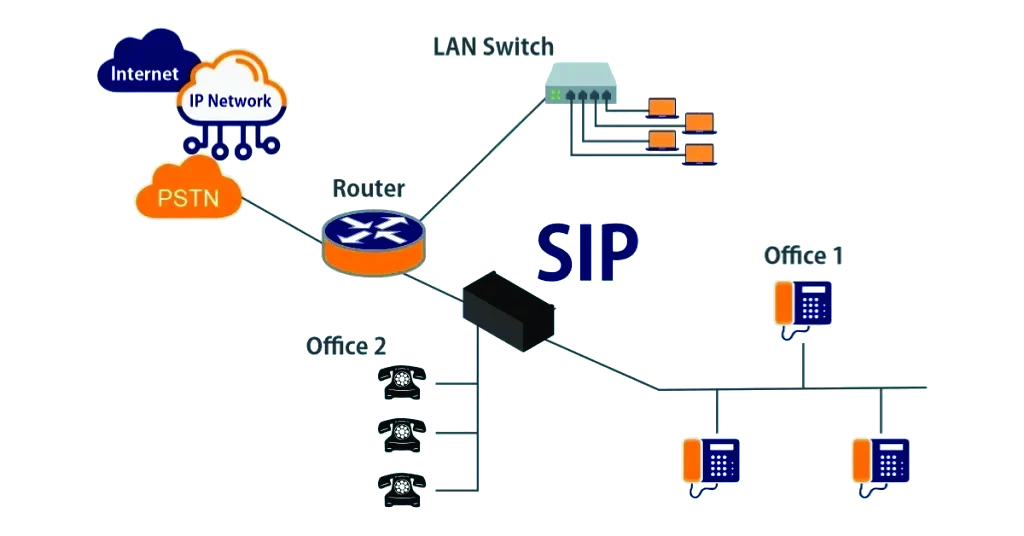In the ever-evolving landscape of business communication, the adoption of Unified Communications (UC) Software has become instrumental in enhancing operational efficiency. This blog aims to provide a detailed exploration of the myriad advantages of incorporating Unified Communications Software into your business operations, with a focus on optimizing communication channels and fostering collaboration.
Introduction
Unified Communications Software serves as a holistic solution, integrating various communication tools into a unified platform. From voice calls and video conferencing to instant messaging and collaboration tools, UC Software streamlines diverse communication channels under one umbrella. Let’s delve deeper into the substantial benefits that this technology brings to the forefront.
Enhanced Collaboration and Productivity
Unified Messaging:
Unified Communications Software consolidates messaging platforms, allowing employees to access emails, voicemails, and instant messages through a single interface. This unified messaging approach fosters seamless communication and significantly reduces the likelihood of missed messages.
Real-time Collaboration:
The incorporation of features such as instant messaging and video conferencing facilitates real-time collaboration among team members, irrespective of their geographical locations. This not only accelerates decision-making processes but also enhances overall productivity.
Centralized Collaboration Hub:
UC Software acts as a centralized hub for collaboration, bringing together project management, file sharing, and communication tools. This integration ensures that teams have a unified workspace, eliminating the need to switch between multiple applications.
Flexibility and Mobility
Remote Work Enablement:
Unified Communications Software empowers employees to work from any location, breaking down geographical barriers. This flexibility is particularly crucial in today’s landscape, where remote work has become a prevalent and preferred mode of operation. Team members can stay connected and collaborate effectively, whether they are in the office, at home, or on the go.
Integration with Mobile Devices:
UC Software seamlessly integrates with mobile devices, ensuring that employees can access communication tools from their smartphones or tablets. This level of flexibility enhances responsiveness and ensures that critical communications are not delayed, regardless of the device being used.
Cost Savings
Reduced Communication Costs:
By consolidating communication tools into a single platform, businesses can achieve significant cost savings. Unified Communications Software eliminates the need for multiple subscriptions and services, streamlining expenses associated with communication technologies.
Lower Travel Costs:
The integration of video conferencing and virtual meeting tools reduces the necessity for business travel. This not only saves on travel expenses but also contributes to environmental sustainability, aligning with modern corporate responsibility initiatives.
Efficient Resource Utilization:
UC Software allows businesses to optimize resource utilization by providing insights into communication patterns. This data-driven approach enables better decision-making regarding resource allocation and helps identify areas for improvement.
Scalability and Integration
Scalability:
As businesses grow, Unified Communications Software can easily scale to accommodate increasing communication needs. This scalability ensures that the communication infrastructure remains aligned with the evolving requirements of the organization.
Integration with Existing Systems:
Leading UC Software solutions seamlessly integrate with existing business applications. Whether it’s Customer Relationship Management (CRM) software or project management tools, the ability to integrate enhances efficiency by providing a unified workspace.
Interoperability with Third-party Tools:
UC Software’s interoperability with a wide range of third-party tools and applications ensures a smooth integration process. This flexibility allows businesses to customize their communication ecosystem based on specific needs and preferences.
Enhanced Customer Experience
Improved Responsiveness:
Unified Communications Software enables faster and more efficient responses to customer inquiries. With features like unified messaging and real-time collaboration, customer-facing teams can address queries promptly, leading to enhanced customer satisfaction.
Unified Customer Interaction:
Integrating communication channels ensures a consistent and unified experience for customers. Whether they reach out via email, phone, or chat, the communication history is readily available, allowing for a seamless interaction that fosters strong client relationships.
Personalized Customer Interactions:
UC Software facilitates personalized customer interactions by providing insights into past communications. This enables businesses to tailor their responses and services according to individual customer preferences, contributing to a positive and memorable customer experience.
Conclusion
In conclusion, the implementation of Unified Communications Software brings a host of benefits to businesses seeking to enhance communication, collaboration, and overall efficiency. Telerain Inc, with its commitment to providing cutting-edge solutions, can leverage the power of UC Software to unlock new levels of productivity and responsiveness.
As businesses navigate an increasingly interconnected world, Unified Communications Software stands out as a transformative tool that not only meets the demands of the modern workplace but also propels organizations toward sustained success.





